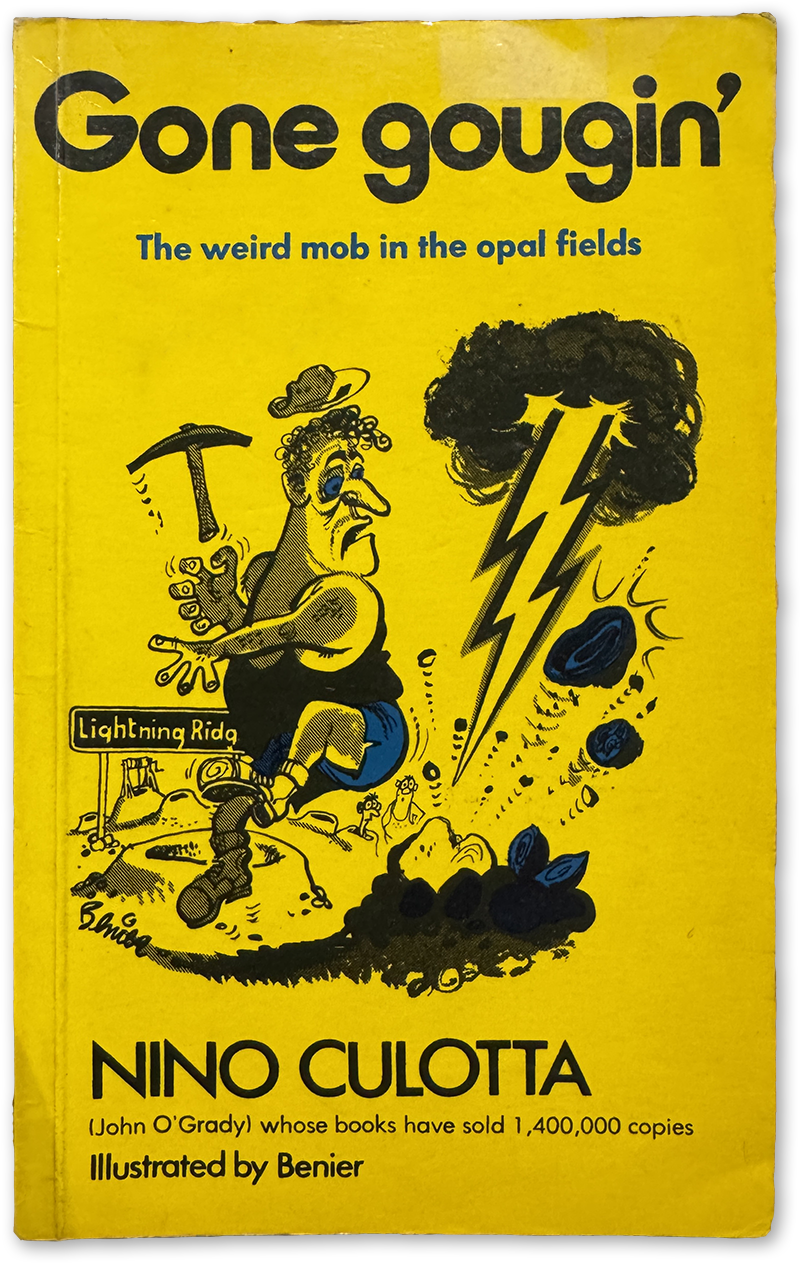John O’Grady (Nino Culotta)
John O’Grady, Hospital Ship Manunda, World War II.
John Patrick O’Grady was born on 9 October 1907 at Waverley, Sydney, the eldest of eight children of John Edward O’Grady and Margaret Gleeson.
O’Grady served with the Australian Army Medical Corps during World War II and worked as a pharmacist, labourer and teacher before establishing himself as one of Australia’s most widely read comic authors.
Writing under the pen name Nino Culotta, O’Grady wrote the novel They’re a Weird Mob (1957). Written from the perspective of an Italian migrant in Sydney, the book was a huge success, selling nearly a million copies during his lifetime and later adapted into a successful film in 1966.
Among the later sequels and spin-offs was Gone Gougin’ (1975), which was inspired by O’Grady’s time spent at Lightning Ridge.
He spent several weeks on the opal fields researching the life of the miners and the culture of the opal fields. While far from a technical or historical account, the book is among the few widely successful literary works of its time to feature Lightning Ridge.
Gone Gougin’ follows the characters of Nino, Joe and Dennis as they venture onto the opal fields, encountering opal miners, living on the fields and dealing with the general difficulties of opal mining as an occupation.
The book references locations, individuals and bits and pieces of “insider information” on opal mining: The Diggers Rest Hotel, Derek Sceats, “Gabe”, The Opal Book by Frank Leechman, Arthur Blackwell, Wallangulla, Tram-O-Tel, Bowling Club, Memorial Hall, Cantfells (sic), Three Mile, Rouse’s Six Mile, Nine Mile, New Chum, Old Chum, Nobby’s, Shallow Four Mile, Telephone Line, New Town, Indian Lookout, Sim’s Hill, Grawin, Glengarry, Peter Rosso, Red Robin, Shearer’s Rush, Dr. Archie Kalokerinos, Cumborah, windlass, hoist, Calweld drill, Bill Smith (possibly a reference to Bill Smeth), Andy Macduff and many other mentions.
“‘[Nino] bought himself a book when we weren’t lookin’. Caught him studyin’ it this arvo.’
Norm was interested. ‘What book?’
I told him it was called The Opal Book, and it was written by a man named Leechman. He said ‘Good on you. As far as I’m concerned that’s the bible. If you learn everything that’s in that, you’ll know a lot about opals.’”
In total, O’Grady published eighteen books, including Cop This Lot (1960), Gone Fishin’ (1962), No Kava for Johnny(1961), and Aussie English (1965).
John O’Grady died at his home in Oatley on 14 January 1981, aged 73.
Article: Research by Russell Gawthorpe and Leisa Carney, edited by Russell Gawthorpe. LRHS research compiled by Len Cram and Barbara Moritz. Sources: Lightning Flash Newspaper, 11 May 1972, 14 August 1975; Gone Gougin’, Nino Culotta, 1975; ‘John O’Grady Dies’, The Canberra Times, 15 January 1981, p. 16; Australian Dictionary of Biography, vol. 18, 2012; ‘John O’Grady’, austlit, 3 July 2024.


